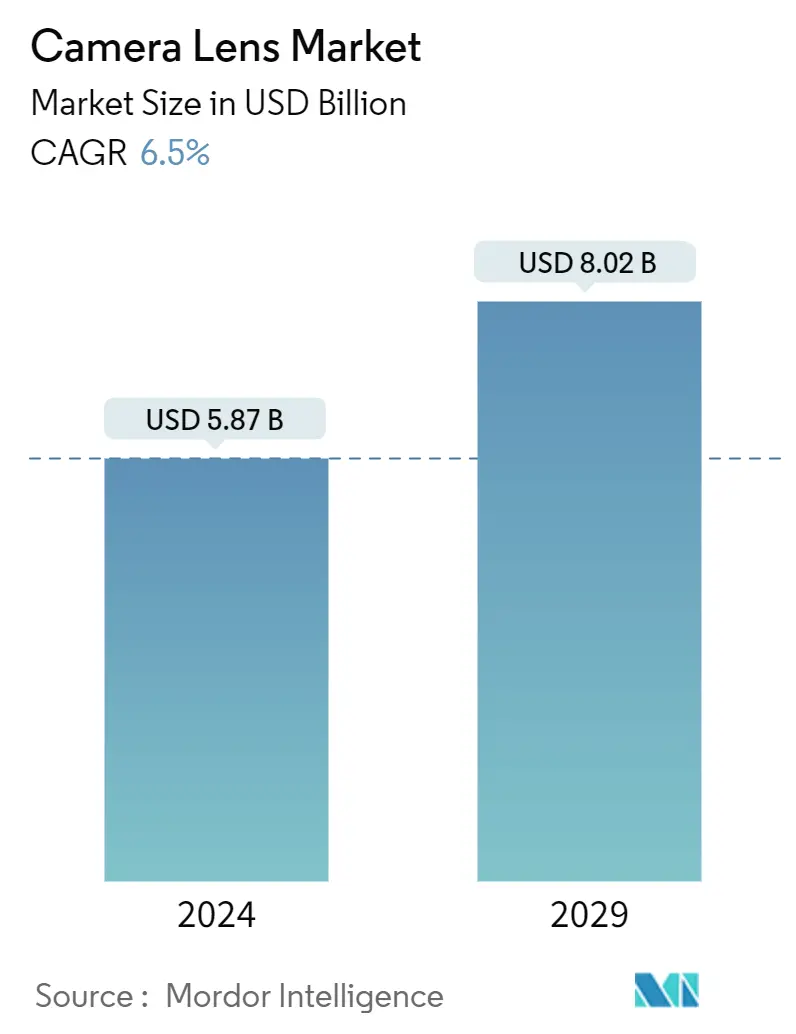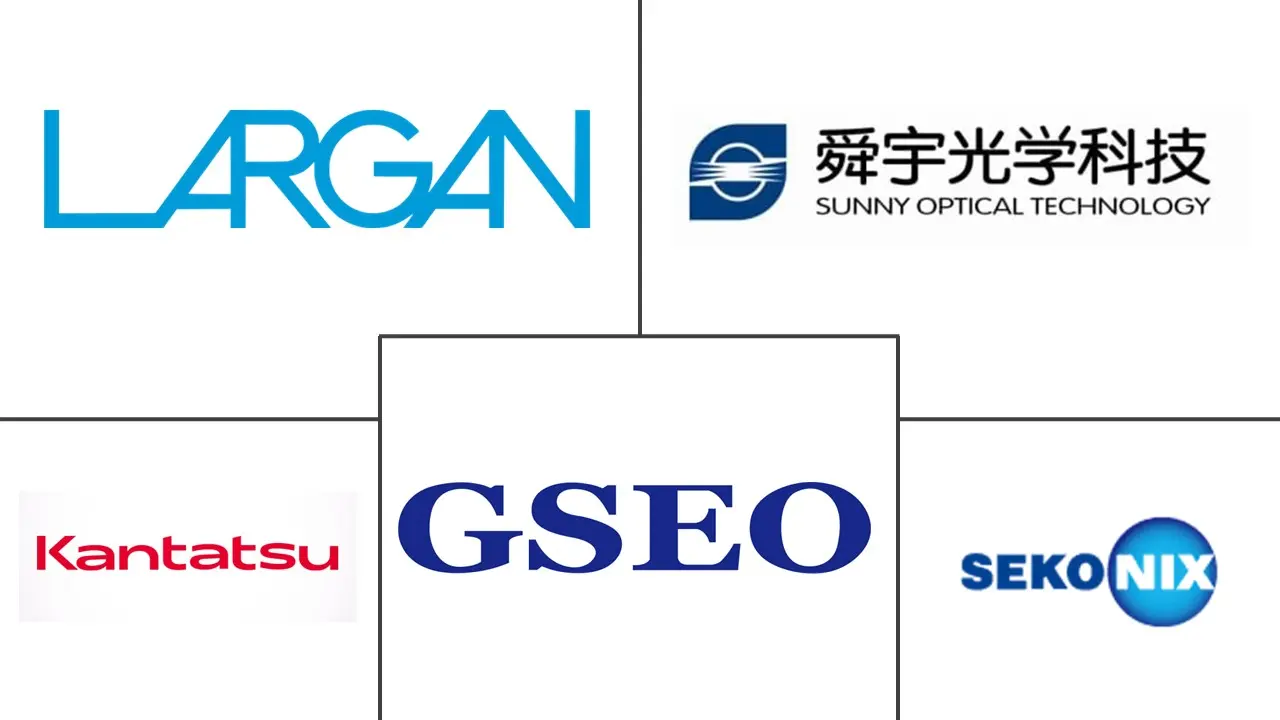Market Size of Camera Lens Industry

| Study Period | 2019 - 2029 |
| Market Size (2024) | USD 5.87 Billion |
| Market Size (2029) | USD 8.02 Billion |
| CAGR (2024 - 2029) | 6.50 % |
| Fastest Growing Market | Asia Pacific |
| Largest Market | Asia Pacific |
Major Players
*Disclaimer: Major Players sorted in no particular order |
Need a report that reflects how COVID-19 has impacted this market and its growth?
Camera Lens Market Analysis
The Camera Lens Market size is estimated at USD 5.87 billion in 2024, and is expected to reach USD 8.02 billion by 2029, growing at a CAGR of 6.5% during the forecast period (2024-2029).
A camera lens is an optical body that facilitates a single lens or a collection of lenses that mount to a camera body. Various lenses are interchangeable, while others are built into the camera’s construction. Modern lenses always look forward to setting the angle of incidence and the angle of refraction to equal values to minimize aberration and feature a focus element that permits the operator to dictate which portions of the image are sharp and which are blurred.
- Recent advances in smartphone camera technology have focused on improving the optical performance of the lens, as well as incorporating additional features such as visual image stabilization and advanced autofocus systems. These improvements have helped make smartphone cameras more capable and opened up many mobile photography and videography possibilities.
- The adoption of smartphones equipped with professional-grade cameras has steadily increased. Prime factors responsible for the market's growth include advancements in smartphone camera technology and the rising demand for social media platforms for attractive visual content. Smartphone manufacturers have significantly advanced camera technology, allowing them to incorporate high-quality lenses, sensors, and image processing capabilities. These advancements have bridged the gap between traditional cameras and smartphones, enabling users to capture professional-grade photos and videos with their smartphones. These advancements include larger sensors, multiple lenses, optical image stabilization, advanced autofocus systems, and computational photography techniques. These features enable smartphones to capture high-quality images with robust detail, dynamic range, and low-light performance.
- Camera lenses play a crucial role in autonomous vehicles by providing visual information about the vehicle’s surroundings. Cameras are fixed on all four sides of the car (front, rear, right, and left) to provide a comprehensive 360-degree view of the vehicle’s surroundings. This allows the car to detect obstacles, pedestrians, and other vehicles nearby.
- Manufacturing camera lenses on a large scale presents several challenges. These challenges include designing and fabricating lens elements, ensuring optical quality, managing production costs, and meeting market demands. The design and fabrication of lens elements are crucial steps in the manufacturing process.
- The COVID-19 pandemic significantly impacted the electronics industry because of the halt in production. This led to increased demand for electronics and semiconductor products in various sectors. The effects of COVID-19 include widespread disruption of manufacturing in Europe and a halt in the export of Chinese parts. These factors adversely impacted the global cameral lens market.
